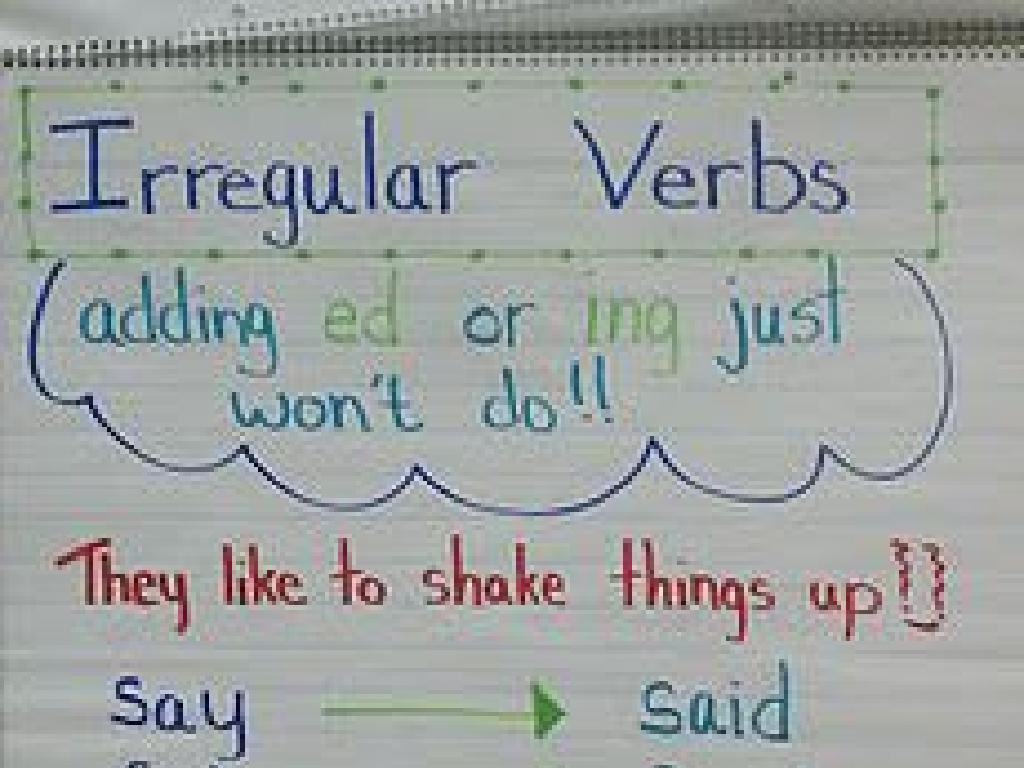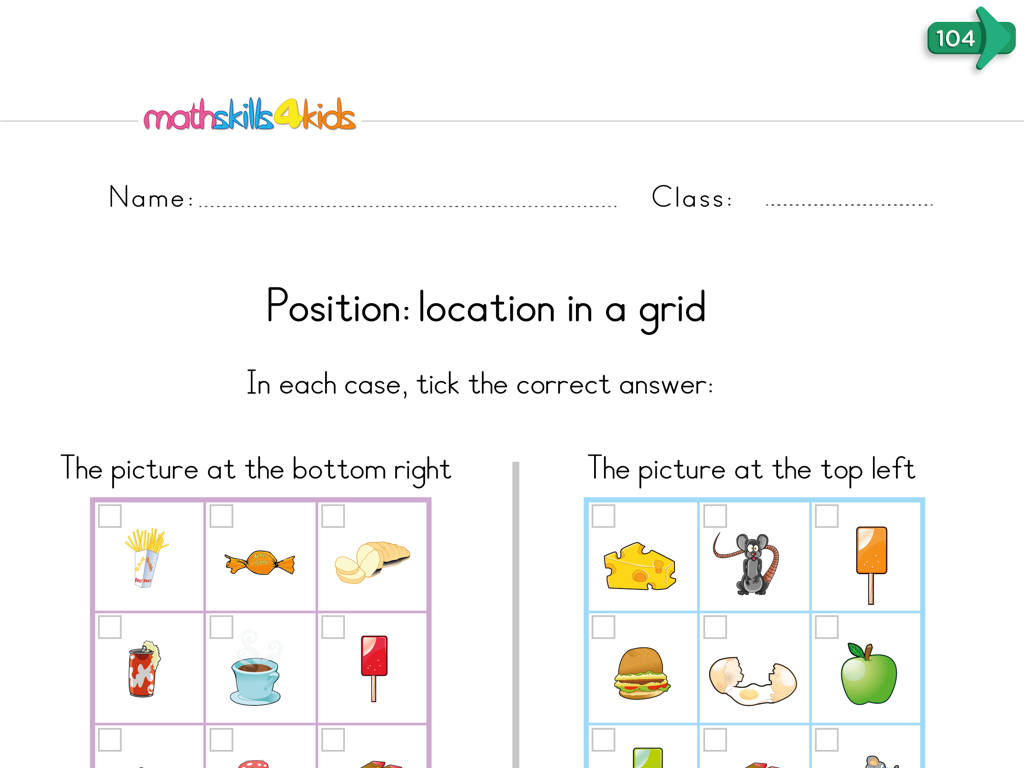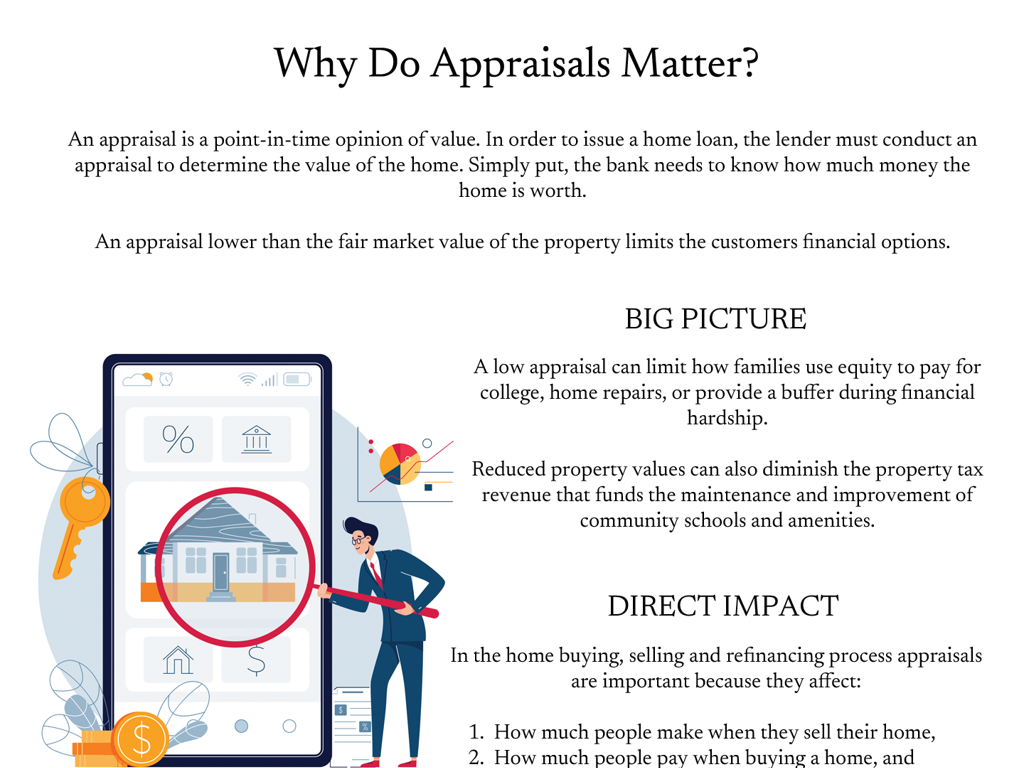Sort Objects Into Categories
Subject: Language arts
Grade: Pre-k
Topic: Categories
Please LOG IN to download the presentation. Access is available to registered users only.
View More Content
Learning About Categories
– What is a ‘Category’?
– A category is a group where things are similar
– Sorting objects is fun!
– Like grouping toys by color or type
– Sorting helps us organize
– It makes finding things easier
– Why is sorting important?
– Helps us understand and describe the world
|
This slide introduces the concept of categories to Pre-k students in a fun and engaging way. Start by explaining that a category is like a family for things that are alike in some way. Use relatable examples like sorting toys or grouping fruits to make the concept clear. Emphasize that sorting can be a fun activity, like a game where they can use their observation skills. Explain that sorting is also a useful skill that helps us keep our things tidy and organized, making it easier to find what we need. Highlight the importance of sorting in understanding the world around us, such as knowing where to find certain items in a grocery store. Encourage the children to think of other areas where they can sort items and discuss why it’s helpful.
What is a Category?
– Categories group similar things
– Like fruits or toys
– Sort by color, shape, size, or type
– Red apples, round balls, big boxes
– Examples help us learn categories
– We’ll look at pictures and real objects
– Practice sorting together in class
|
This slide introduces the concept of categories to Pre-k students, emphasizing the idea that a category groups things that are similar in some way. Use tangible examples like fruits for type, colored blocks for color, various balls for shape, and different sized boxes for size. Visual aids and real-life objects should be used to help students understand the concept. During class, engage the students in a hands-on activity where they can practice sorting items into categories. This will help reinforce the lesson and make the concept of categorization more concrete for young learners.
Sorting by Color
– Grouping red objects together
– Look, all the red items are one group!
– Find and add blue items
– Search for blue objects around us to join the blue group.
– Understanding categories
– Color categories in class
|
This slide is aimed at teaching Pre-k students about categorization based on color. Start by showing them a group of red objects that have been sorted into one category. This visual representation helps them understand the concept of grouping by color. Next, engage the students by asking them to find and add blue items to a separate ‘blue’ category, making the activity interactive and hands-on. Explain that sorting objects into categories helps us organize things better and makes it easier to find what we need. During the activity, assist the children in identifying blue objects and guide them to the right category. Praise their efforts to reinforce learning. The goal is to make the concept of categorization by color clear and to ensure that the children can apply this skill independently.
Sorting Fun: Shapes
– Shapes can be different
– Toys have shapes like circles
– Look at your toys, find the round ones
– Match toys to the same shape
– Find the toy’s shape twin on our shape board
– Circle, square, triangle toys
– We have toys that are circles, squares, and triangles
|
This slide is designed to introduce Pre-k students to the concept of sorting objects by shape. Begin by explaining that shapes are forms like circles, squares, and triangles. Use toys as a relatable example to help them understand the concept of shapes. Encourage the children to match their toys to corresponding shapes on a shape board or a drawn diagram in the classroom. This activity will help them visually recognize and categorize shapes, which is a fundamental skill in early geometry. Make sure to have a variety of toys in different shapes available for the activity, and guide the students through the process, ensuring they understand why each toy matches a particular shape.
Sorting by Size
– Sorting by size is fun!
– Big and small are sizes
– Size tells us how big or small something is
– Organize pictures by size
– Look at the size of each picture carefully
– Smallest to biggest order
– Line up the pictures from the very smallest one to the very biggest one
|
This slide introduces the concept of sorting objects by size, which is a fundamental skill in understanding categories. Encourage the children to think about what it means for something to be big or small. Use real-life examples like toys or fruits to illustrate the concept. During the activity, provide a set of pictures that the children can physically arrange from the smallest to the biggest. This hands-on activity will help them grasp the concept of size comparison and order. Make sure to praise their efforts and correct gently if they make mistakes, reinforcing the learning objective.
Sorting by Type: Grouping Similar Objects
– Group similar things together
– All animals in one group
– For example, a cat, a dog, and a fish stickers together
– All cars in another group
– Toy car, race car, and truck stickers together
– Let’s sort stickers by type
|
This slide introduces the concept of categorization to Pre-k students, which is a fundamental skill in early childhood education. It helps children recognize similarities and differences and is a precursor to organizing thoughts and objects. Start by explaining that things that are alike should be grouped together. Use tangible examples like animal stickers or toy cars to make it easier for them to understand. During the activity, provide various stickers and ask the children to sort them into groups based on their type. Encourage them to explain why they grouped the stickers the way they did to reinforce their understanding of categories and to develop their language skills.
Class Activity: Sorting Fun!
– It’s your turn to sort items
– We’ll sort classroom items together
– Sorting helps us stay organized
– Like putting toys in the toy box
– Finding things becomes easier
– Like when you look for your favorite crayon
|
This activity is designed to teach students the practical skill of categorization. Start by explaining the concept of sorting and how it is used in everyday life to keep things tidy and make them easier to find. Demonstrate sorting with a simple example, such as sorting fruits by color or toys by type. Then, involve the students in a hands-on activity where they sort various classroom items into predefined categories. Possible activities include sorting shapes, colors, sizes, or types of objects. Encourage the children to think about why items belong in the same category and discuss the choices they make. This will help them understand the concept of sorting and how it can be applied to different scenarios.
Review and Goodbye: Sorting Success
– Celebrate our sorting skills
– Recall one category we created
– Was it colors, shapes, or sizes?
– Anticipate more category fun
– Say our goodbyes for today
|
Today’s class was all about sorting objects into categories, a fundamental skill that helps with organization and identifying relationships between items. As we wrap up, praise the children for their hard work and encourage them to reflect on what they’ve learned by asking them to name one category they sorted objects into. This reinforces their understanding and gives them a sense of accomplishment. Let them know that next time, we’ll dive even deeper into the world of categories, which will help them with more complex sorting tasks. End the class on a positive note, ensuring the children are excited for their next learning adventure.





